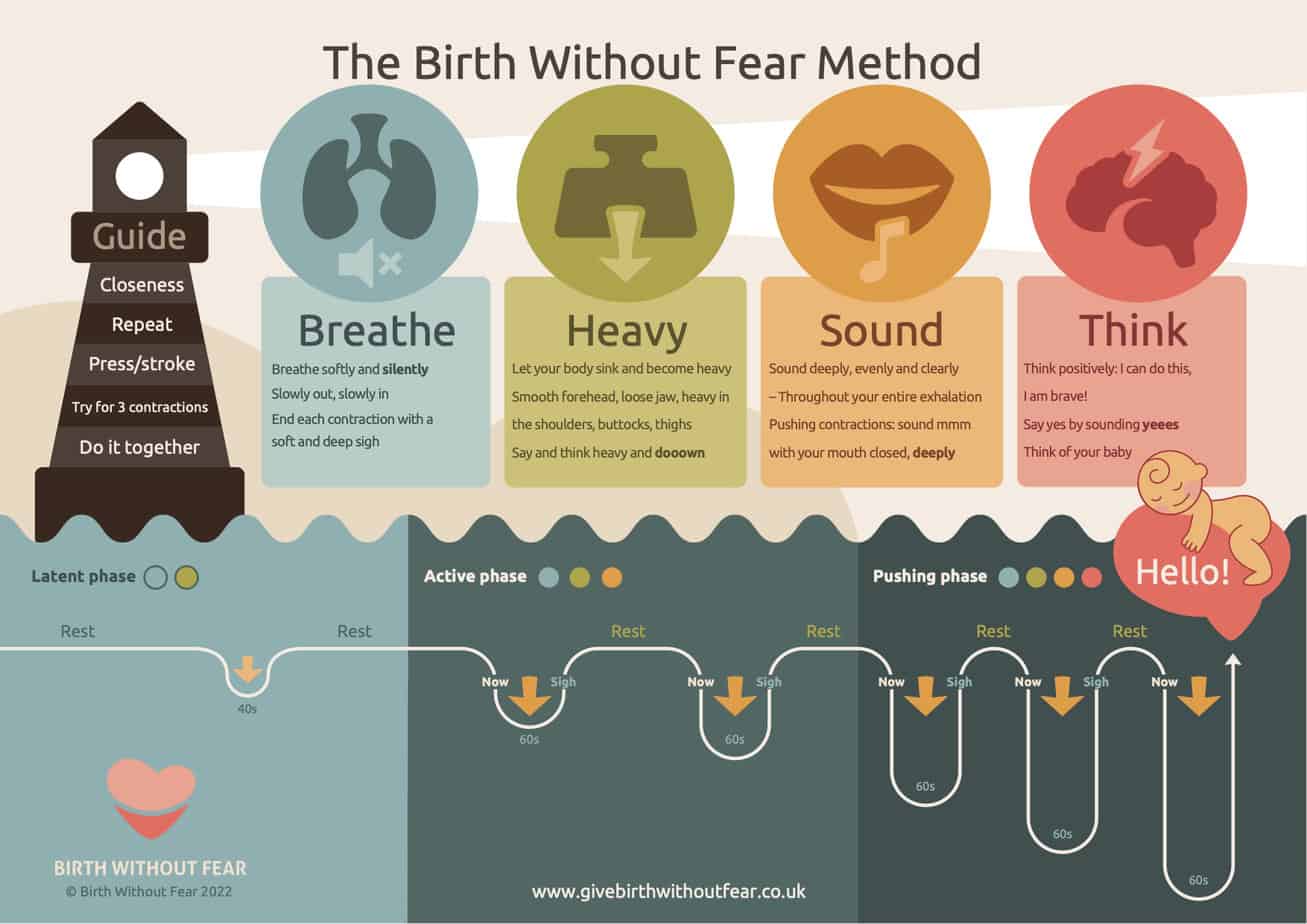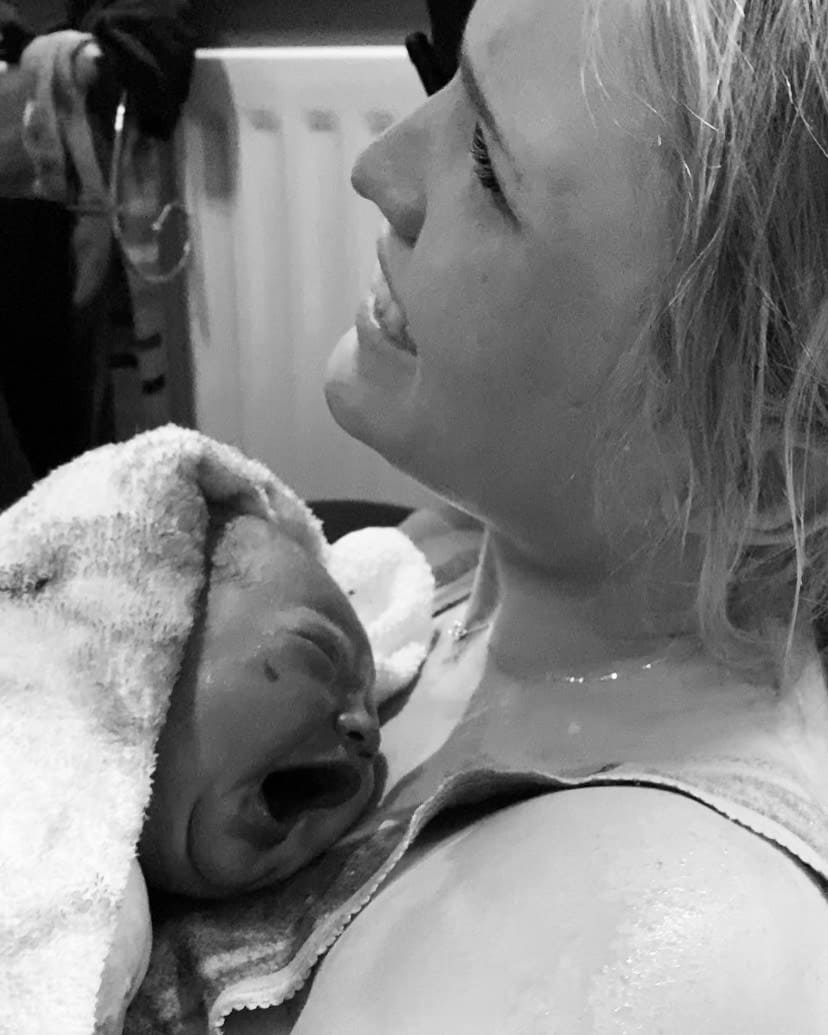How to have an Emotionally Safe Birth- The Birth Without Fear Method
Emilie Wicks and Camella Main
BSc (Midwifery) King’s College London, Perinatal Education Facilitator for a Baby Steps Program in Lambeth (NSPCC), Birth Without Fear Method Ambassador for the UK
www.birthbyheart.com
www.givebirthwithoutfear.com
Instagram @givebirthwithoutfear @swedishmidwife
Summary
When we think of coping and handling labour, we often think about what pain-relief birthing women are offered. Women fought very hard for their right to pain-relief choices in labour throughout the 1970’s1, however, what is less well known is that pain relief, regardless of which one you choose, does not guarantee an ‘emotionally safe’ birth experience.
This article will show how the “Birth Without Fear” method has revolutionised childbirth in Sweden to make it more emotionally safe and fulfilling2.
Birth without Fear
The method defines three components of childbirth:
- Understanding the physical and emotional challenges of childbirth
- Coping and handling
- Pain relief
The first two elements must come first to ensure an emotionally safe birth, better known as a “positive birth experience”. Only once those are in place can you add pain relief on top. For some, the 3rd element may never become necessary depending on establishing the first two.
Within the first component, we need to explain why it is (for most women) a painful experience. Childbirth pain differs from other normal physiological painful experiences because the contractions are interspersed with breaks. In contrast to period pains, growing pains, teething pain and post-exercise pain, labour is intermittent in nature, so the birthing woman and her baby can rest between each painful episode.
It is painful because the muscle layers of the uterus are working extremely hard to dilate the cervix, around which there are many pain-sensitive nerve endings. Every contraction, therefore, has a positive message: it means the baby is coming. Yet how she manages the painful aspect and how she cognitively accesses the breaks will completely depend on the emotional state of the birthing woman.
Why is this?
The plethora of research underpinning the Birth Without Fear method has evaluated the complexity of pain management in the modern pain-avoidant society of today2. It appears that the modern woman may be ill-equipped to handle pain and is therefore fearful of it. The portrayal of birth in the media compounds and consolidates this fear. Therefore, the birthing woman starts her childbirth journey in an emotional state of stress and fear. The method has highlighted that there is a difference between pain when you feel like you are suffering and pain when you are coping.
Within the method, the coping factor during labour is defined as being intrinsically linked to how physically and emotionally supported we feel2. From a scientific perspective, this relies on how much of our own intrinsic oxytocin we can access.
Oxytocin:
Oxytocin is the magical hormone which facilitates:
- Love
- Relationships and bonding
- Orgasms
- Breastfeeding
- Optimal digestion
- Rest, sleep and recuperation
- Cell renewal and healing
- Thriving3
It also regulates uterine contractions and, because of its makeup, has a calming effect on the body, thus reducing the perception of pain. Oxytocin has a positive feedback mechanism, meaning once it is activated, the birthing woman will have access to her very own ‘oxytocin tap’, which maximises her innate birthing physiology further, bringing her baby closer and closer with each contraction3.
Accessing the ‘Oxytocin Tap’ via the emotions
Our emotions are our guides- they tell us if there is any threat to the baby’s survival or if it is safe to give birth. All our emotions are expressed in the body; therefore, fear will affect the body’s physiological response by increasing our respiratory/heart rate, tensing our muscles upwards, raising the pitch of our voice and locking our minds in the nocebo: the negative expectation effect affecting the physiological response.
The Birth Without Fear method has devised four simple and powerful tools thousands of birthing families have used throughout Scandinavia for over 12 years. Each tool is based on the science of physiology and designed to help the birth-partner guide the birthing woman to mimic how the body behaves when we feel safe, thus ensuring an emotionally safe birth experience.
The four tools:
- Breathing – soft and silent in every contraction.
- Relaxation – Directing the 4 Fight-or-Flight ‘muscle stations’: brow/jaw/trapezius/gluteus and thighs downwards /become heavy in every contraction.
- The Voice – deep
- The Mind – dare to say ‘’Yes’’: placebo effect → positive expectation effect affecting the physiological response.
The Classes:
In these 4-hour antenatal classes, the birth partner learns how to read her body language and guide the birthing woman in each contraction towards the feeling of safety. Therefore, this method is incredibly effective because physiologically, we are all made the same and will respond in the same way with the proper guidance. It empowers the birthing woman who can access her innate ‘oxytocin tap’, with or without pain relief. It also empowers the birth partner, who gets practically involved in every contraction by applying the four tools.
For booking enquiries or to find out more, contact em*********@**********rt.com














